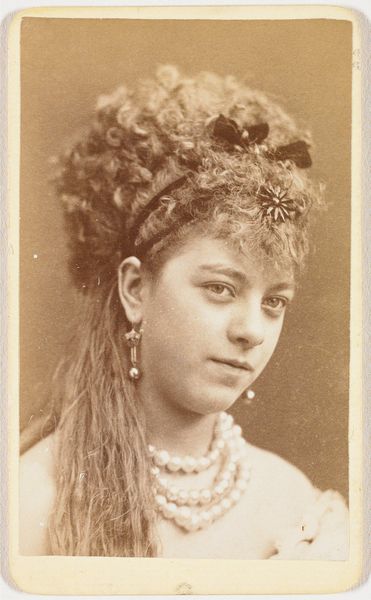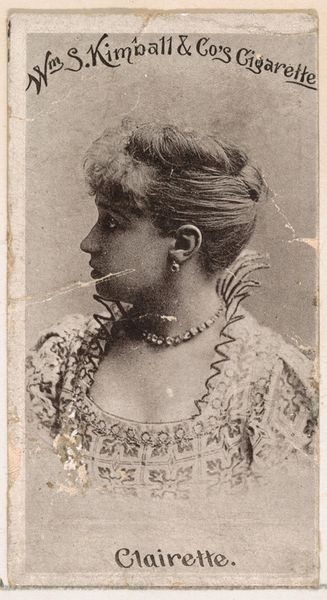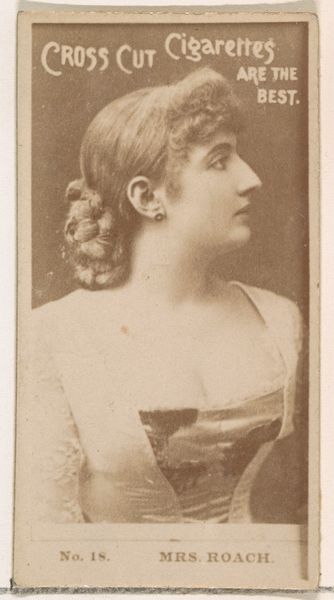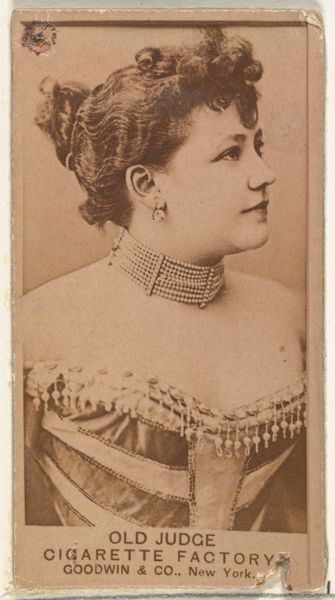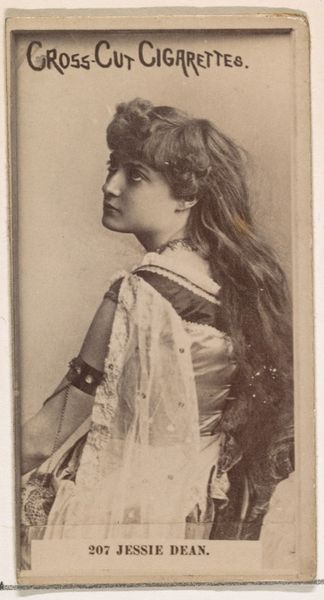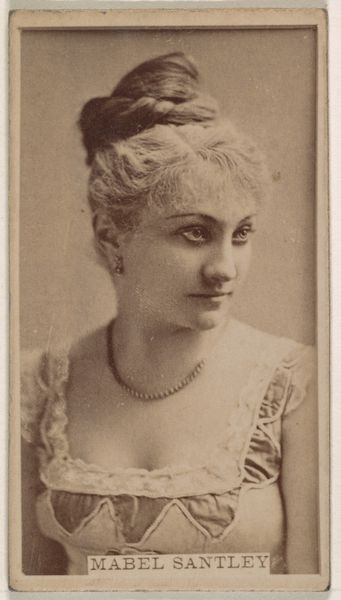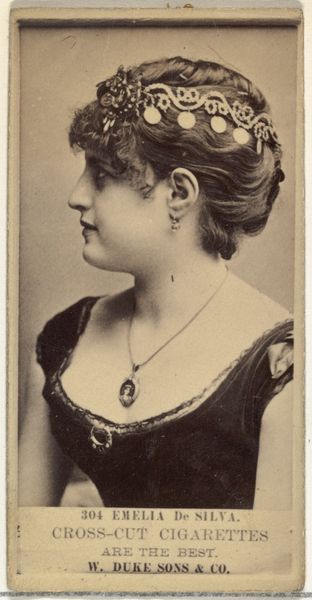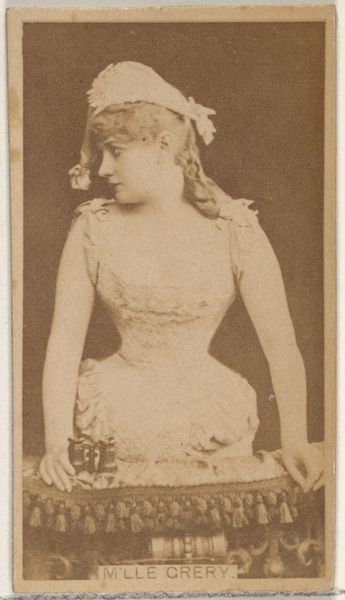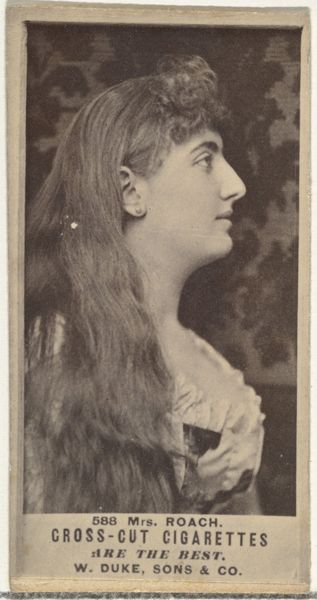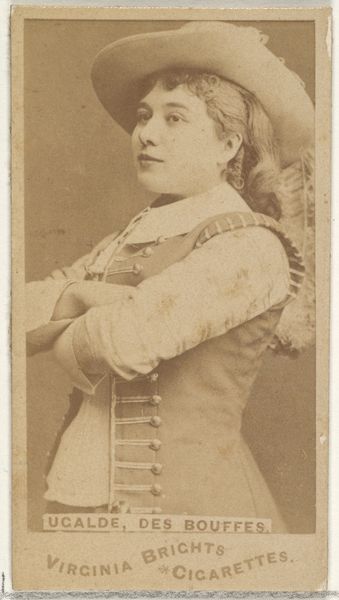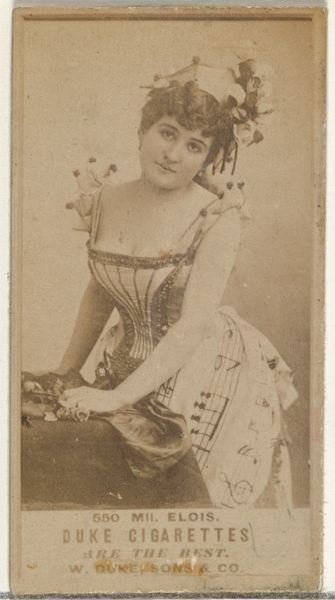
photography, gelatin-silver-print
#
portrait
#
wedding photograph
#
photo restoration
#
portrait image
#
portrait subject
#
photography
#
portrait reference
#
framed image
#
gelatin-silver-print
#
united-states
#
portrait art
#
portrait character photography
#
fine art portrait
#
celebrity portrait
Dimensions: 3 5/8 x 2 3/8 in. (9.21 x 6.03 cm) (image)4 x 2 7/16 in. (10.16 x 6.19 cm) (mount)
Copyright: Public Domain
Jeremiah Gurney made this albumen print of Mip Paulinson, the sitter, sometime in the mid-19th century. Gurney was a prominent New York photographer, at a time when photography was becoming increasingly accessible to the middle class. This portrait, like many of the era, offers a glimpse into the construction of identity, particularly for women. Note Paulinson’s elaborate hairstyle and carefully chosen dress, both signifiers of her social standing and femininity. Her downcast gaze evokes a sense of demureness, aligning with the expectations of women during this period. Yet, there’s a subtle tension – a hint of melancholy – in her expression, which perhaps speaks to the constraints placed upon women. Photographs like these are not just records of appearance; they are cultural artifacts that embody the complex negotiations of identity within a specific historical context. They encourage us to reflect on the gazes, both historical and contemporary, that shape our understanding of ourselves and others.
Comments
minneapolisinstituteofart about 2 years ago
⋮
An important part of New York City-based photographer Jeremiah Gurney’s business was making small-size portrait photographs. Beginning in the 1850s, cartes de visite (calling cards, or visiting cards) photographs were popular. They were often made with a four-lensed camera, capturing four of the same image at once. They were printed eight on a sheet and each photograph was mounted on a thick cardboard paper sized 2.5 in. by 4 in. Cartes de visite were shared among families and friends, and mostly were stored in photographic albums. However, by the early 1880s, cartes de visite were replaced by larger cartes de imperiale (cabinet card), also albumen prints, mounted on cardboard backs measuring 4.5 in. by 6.5 in. Because of their size, cartes de imperiale would have been visible from across the room. As such, they were often displayed using frames and small stands.
Join the conversation
Join millions of artists and users on Artera today and experience the ultimate creative platform.

